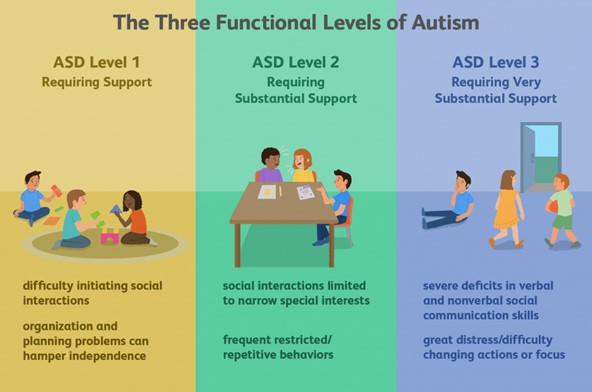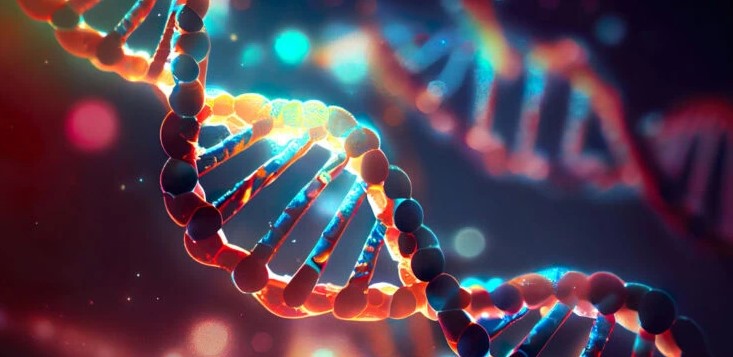What Is Autism?
Autism is a neurodevelopmental disorder that occurs in 1 in 68 children in the EU. While it is diagnosed much more often in boys, this discrepancy may result from gender bias in diagnosing or because girls tend to be better at “masking” their symptoms. There is no single cause of autism, but it is suspected that genetic, biological, and environmental factors are involved in its development.
Autism is a lifelong diagnosis. While there is no known cure for autism, early diagnosis and diets and supplements are the best way to maximize clinical improvement.
As you may know, Autism Spectrum Disorder (ASD) is an umbrella term used to describe a broad range of conditions characterized by challenges with social skills, repetitive behaviors, speech, and nonverbal communication. But if you have been in the Autism community for quite some time, then you may be aware of some of the changes that have been made and the terms that are no longer used.
In 2013, the Diagnostic and Statistical Manual of Mental Disorders, 5th Edition updated the criteria for an ASD diagnosis to include three distinct levels. Every individual who is diagnosed with Autism Spectrum Disorder is further diagnosed with one of the following: ASD level 1, ASD level 2, or ASD level 3.
Each level of Autism varies on the level of support that the individual will need (which may change with time).
Five Types of Autism
Before 2013, autism was categorized into five levels that were also based on severity. The five levels of autism are outdated terms and are no longer recognized in the medical world or used as proper diagnoses. Still, the terms are widely used within the community for people who were diagnosed before 2013. The former types of autism include:
- Asperger’s Syndrome
- Childhood Disintegrative Disorder (CDD)
- Pervasive Developmental Disorder – Not Otherwise Specified (PDD-NOS)
- Classic Autistic Disorder or Kanner’s Syndrome
- Rett Syndrome
Three Levels of ASD
Unlike the previous terms, the updated levels of ASD do not have individual names, nor are they particular “syndromes.” The three levels of an ASD diagnosis are categorized by the level of severity or required assistance that the individual will need.
Once the child is diagnosed with ASD, an accompanying level of ASD will most likely be included. Level 1 is a mild case where individuals require little or no assistance; level 2 is moderate and may require substantial assistance for specific daily tasks; Level 3 would be the most severe and require almost full-time support.
The signs of autism are usually noticed by parents or noticed within the first few years of a child’s age after noticing that it may take a little longer for the child to reach developmental milestones such as talking, going to the toilet, etc.
The rule of thumb here is that the earlier you notice the signs of autism, e.g. as early as 18 months of age, the more severe the degree of autism is. However, the sooner you start early intervention, the only good thing, of course.
ASD Level 1: Requiring Support
If your child has recently been diagnosed with Level 1 ASD, you might wonder what to expect or what that means for your child, especially if they are toddler-aged. It’s important to note that just because there are hallmark symptoms and required criteria for the diagnosis, level 1 Autism in toddlers may look different from one child to another. However, here is a list of some common traits or behaviors that you may see:
- Difficulty with verbal and nonverbal communication
- Repetitive or restrictive behaviors
- Picky eating
- Stereotypic behavior ( spins, rocks, sways, twirls or taps fingers, toe walking, hand flapping)
- Lining objects up (books, toys, etc.)
- May not respond to their name or to spoken words
- Delayed milestones (learning how to go to the bathroom, speaking)
- Dropping items to watch them fall
- Sensory sensitivity to smells, sounds, lights, textures, and touch
- Prefers being alone rather than playing with other kids
- May have unusual use of vision like looking at objects from unusual angles
- Lacks eye contact
- Losing interest quickly
Level 1 autism in toddlers is considered a mild diagnosis. It is a good idea for parents to develop routines and habits that will help to improve ASD symptoms that may eventually cause stress to the child. Stress is often the cause of other symptoms like autistic meltdowns, so having a system in place may help reduce stressful situations. Some parents look to behavioral therapy; others have found success by addressing nutritional deficits with the help of AUTISIL KIDS.
If any of these behaviors occur, parents should take their child to a physician to be properly evaluated and diagnosed. Only the doctor will be able to identify the level of ASD that will be diagnosed in your child.

ASD Level 2: Requiring Substantial Support
Social communication and repetitive behaviors present themselves more obviously in children with ASD level 2 than in children with level 1 autism. Children on this level have challenges in verbal and nonverbal communication, as well as reduced or abnormal responses to social cues.
Inflexibility of behavior is also more pronounced than in ASD level 1. Repetitive behaviors appear more frequently and may be obvious to casual observes. Likewise, children with level 2 autism may have difficulty coping with changes in routine, which can cause challenging behavior.
ASD Level 3: Requiring Very Substantial Support
ASD level 3 is characterized by severe challenges in social communication as well as extremely inflexible behavior. Children with level 3 autism will be nonverbal or have the use of only a few words of intelligible speech. Initiation of social interaction is very limited, as well as response to others. An individual at this level may interact with others abnormally, and only to meet immediate needs.
Individuals with level 3 autism exhibit marked inflexibility of behavior, with extreme difficulty coping with changes to routine. At this level, restrictive or repetitive behaviors interfere with the individual’s ability to function. Changing focus from one activity to another may come at great difficulty and cause significant distress.
Outdated Autism Diagnoses
The previous diagnostic manual (DSM-IV) defined five subcategories of autism, including Asperger’s syndrome (mild, or high-functioning autism) to autistic disorder (severe autism), which are now considered outdated diagnoses. It also included Rett syndrome and childhood disintegrative disorder (CDD), both rare disorders which are no longer considered part of the autism spectrum.







